|
|
 |
|
|
Operation Bagration
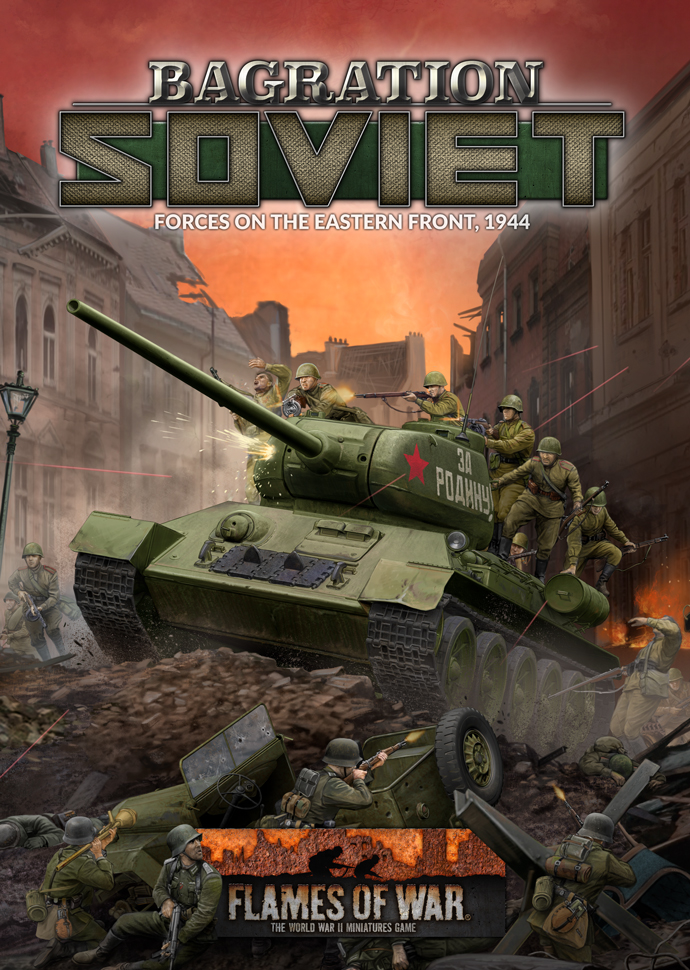 |
A Brief History of Operation Bagration
By Scott Elaurant
The Russian Front, Summer 1944
The western world held its breath as Allied troops landed in Normandy on D-Day, 6 June 1944. Yet 1500 miles away in Byelorussia (central Russia), a much larger battle was about to commence. Here Army Group Centre had been on the defensive for over two years, since the initial German offensive of Operation Barbarossa had been halted short of Moscow in December 1941. By 1943 the Soviets had thrown them back west of Smolensk in Operation Suvarov, but they still held a strong defensive position. Now led by General Ernst Busch headquartered in Minsk, Army Group Centre consisted of three Armies with 38 divisions and some 500,000 men.
General Reinhardt’s 4th Panzer Army covered Vitebsk and the Dvina River in the north. In the centre the Fourth Army under General Kurt von Tippelskirch held miles of trenches from Orsha to the Dneiper River line.
|
|
In the south the Ninth army of General Hans held the sector along the Dneiper to the vast Pripyet Marshes. The Second Army of General Walter Weiss in the Pripyet Marshes was also part of Army Group Centre, although they would take little part in the fighting as the Soviet offensive skilfully avoided them.
Byelorussia was potentially good defensive terrain. It was dotted with woods and swamps. Several major rivers ran across it from north to south. The few roads all met at towns or small cities that dominated the surrounding area. Yet the position had been critically weakened. In late 1943 and early 1944, the adjacent Army Group North and Army Group North Ukraine had both been forced back over one hundred miles by Soviet offensives, exposing the long flanks of Army Group Centre.
Stalin saw the opportunity and instructed Stavka to prepare an offensive plan – Operation Bagration (named after the Russian general who died at Borodino in 1812) - against the German centre. The Soviet General Staff gathered four Fronts, containing 1.7 million men, and led by some of the Soviet army’s finest commanders. The offensive would be planned by two of his best strategists Marshall Aleksandr Vasilevsky and Marshall Georgi Zhukov. On the northern flank were the First Baltic Front of General Bagramyan and Third Byelorussian Front under General Chernyakovski. In the centre was Second Byelorussian Front under General Zakharov and on the southern flank was First Byelorussian Front of General Rokossovsky.
|
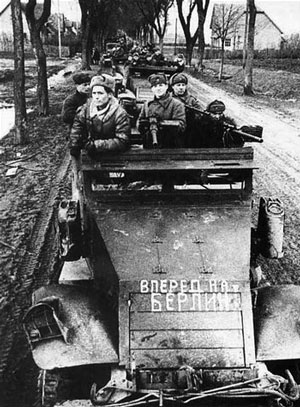 |
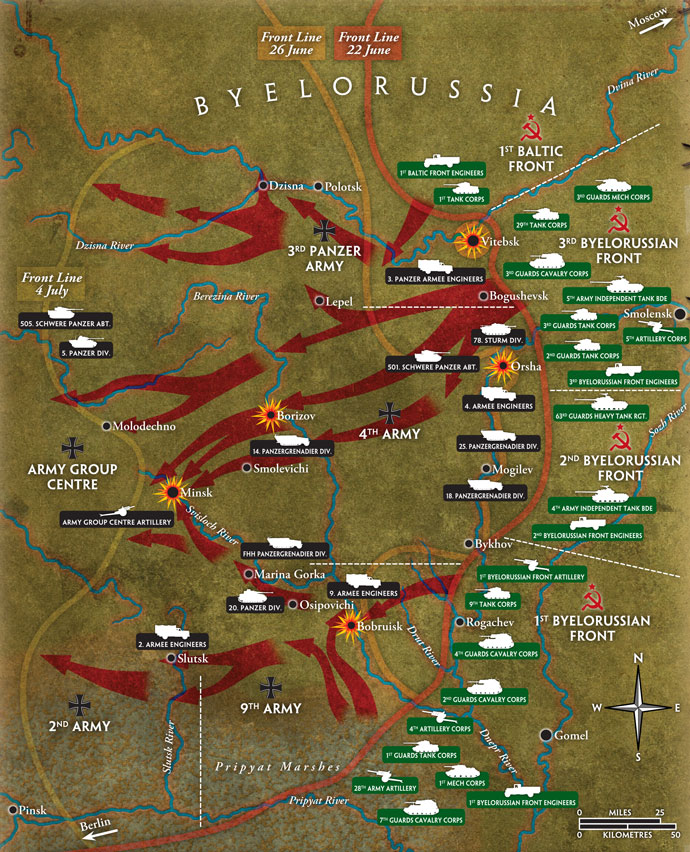 |
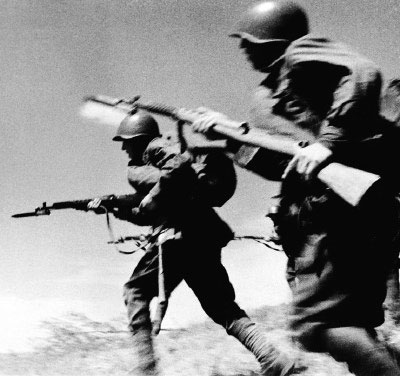 |
Maskirovka – Strategic Deception
Bagration would be the best planned Soviet offensive of the war. To achieve both strategic and tactical surprise, the Soviets employed an elaborate system of deceptions called “Maskorovka” (camouflage). Fresh units in Byelorussia were carefully concealed behind the front. Approach roads to the front were quietly built at night. Even the opening of the offensive itself would be deliberately low-key, so as not to immediately give away the plan. Meanwhile in the Ukraine, radio silence and dummy units convinced the Germans that the blow would fall there.
Maskirovka worked perfectly. Hitler moved over half of Army Group Centre’s tanks and artillery to the Ukraine as reinforcements. Army Group Centre was ordered to defend in place, with each front line city to be fortified as a “festerplatz”. The few remaining armoured units would be held well back as strategic reserves, unable to quickly intervene. |
| Gefreiter Hans Kuhn slammed the door shut on the end railcar and signalled to the engineer for the train to get under way. At last, the final supply unit of XLVI Panzerkorps was on its way from Minsk to the Ukraine! He turned to his sergeant, Witzelbein “Well that’s most of our assault guns, tanks and half of our artillery all sent to reinforce Army Group South in the Ukraine. The general staff must think they are really going to cop it!” “Ja”, Kuhn shuddered, “I’d hate to be in their shoes.” |
|
The Partisans – Operations Rail War and Concert
Byelorussia had been the centre of vigorous partisan activity for over three years. Many Soviet soldiers cut off in the rapid German advances of 1941 had melted into the huge forests and became partisans. This led to a brutal cycle of guerrilla attacks, German reprisals, and more recruits joining the partisan bands. Hundreds of villages and kolkhozes were wiped out. The population of Minsk was reduced by over half. In three years one quarter of the civilian population of Byelorussia died of starvation, fighting, reprisals, or had been deported to German camps.
Despite the efforts of Polizei units behind the lines, by 1944 there were Partisan groups the size of Brigades.
|
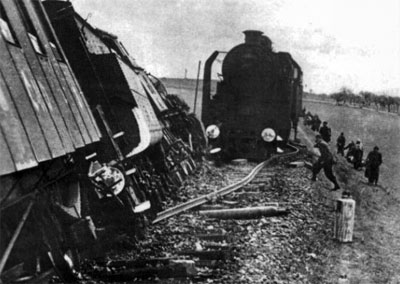 |
| They controlled large areas in the German rear, even growing their own crops for food. An estimated 180,00 partisans were active during Bagration, with many inducted into Soviet army units when their areas were liberated. On 19 June they struck in the largest coordinated partisan operation of the war. Over 1000 German rail lines, bridges and communication centres were hit. For several days the German rail system was paralysed. |
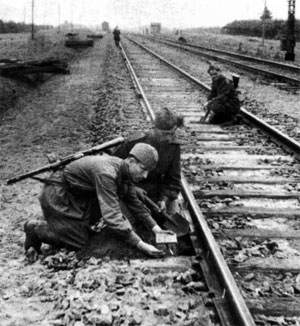 |
Yuri hauled the cart of explosives faithfully behind Comrade Masherov, leader of the local Brigade. At first he had been afraid to join the partisans, but when an Einsatz unit destroyed Ghalkin Kol there was no choice left. Now Yuri’s fate is tied to that of his brigade. This strike on the Moscow-Warsaw rail line was said to be their most important mission ever. A tense night walking silently to the bridge was followed by feverish activity placing the explosives. Then suddenly there was the whistle blast of a train in the distance. The plunger was rammed down – success! The explosion wrecks the bridge and train. Their job done, now to escape.
There is no going back. Polizei are everywhere trying to track down the saboteurs. But Comrade Masherov is a cunning fox, leading them a merry dance through the forest. And the group senses a change in the air – more Germans are rushing west than east. Finally after a week’s march, Petr leads them towards tanks silhouetted on the horizon. Yuri’s heart freezes. But wait, they are T34s – liberation at last! The red army welcome them like brothers. They are now members of the 27th Tank Brigade, First Byelorussian Front. In August a message from Stalin himself with the most joyous news of all - Petr Masherov is now a Hero of the Soviet Union! |
The Hammer Falls – Vitebsk Surrounded
The Soviets had assembled a 3 to 1 superiority in men, and much more in tanks, artillery and aircraft. But Bagration did not rely on mere brut force. On each front pincer attacks would be launched to capture the frontier fortress cities. The north and south wings would then push through to meet at Minsk, surrounding Army Group Centre.
Rifle Divisions were organised into assault groups reinforced by assault guns and occasionally heavy tanks. They would make the initial breakthrough of the German defensive lines after short, sharp bombardments. Artillery Breakthrough Divisions (with 152mm guns) were attached to pulverize German trenches and guns before the assault. Soviet air superiority was total, with many Luftwaffe squadrons having been transferred west after D-Day. |
On 22 June the offensive began in the north when Beloborodov’s 43rd Army and Lyudnikov’s 39th Army attacked either side of Vitebsk. The scale of the attack was a complete surprise to the Germans. A short (15 minute), sharp bombardment covered the approach. The 43rd crashed through the German front line, opening a five mile gap on the first day.
In the centre the attacks began a day later. Galitsky’s 11th Guards Army and 31st Army attacked Orsha. Here the 78. Sturmdivision provided stiff resistance. The Soviet artillery bombardment had largely missed their defences and guns. Nearby at Mogilev the Soviet 33rd and 50th armies had no such trouble. Although local counterattacks delayed them, both soon broke through and threatened to cut off the defending German XXXIX Korps. |
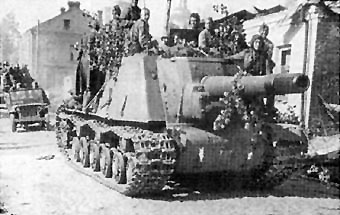 |
| In the south the First Byelorussian Front began last on 24 June. General Rokossovksy had prepared well, constructing corduroy roads that could be laid across swamps to ensure a quick advance. A massive two-day artillery bombardment smashed the German defences. At the end of it the 3rd Army emerged from the presumed uncrossable swamp and attacked north of Bobruisk and the 65th Army to the south. Both broke through quickly. |
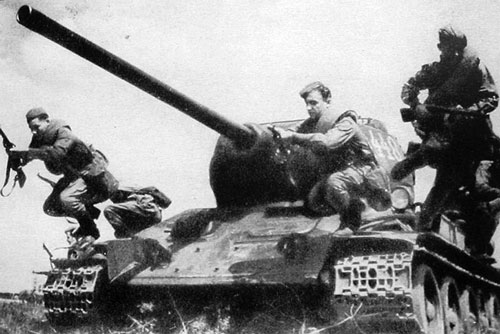 |
The Tanks Breakthrough
The Soviets had rapidly cleared a gap in the defences on all three fronts. With the way cleared Tank, Mechanised and Cavalry Corps were waiting to exploit the gaps. Equipped with T34s and American trucks for mobility, they drove deep, surrounding and sealing off the German front line remnants.
In the north Front commander Bagramyan did not wait for the schedule and immediately committed the 1st Tank Corps. Within a day they had crossed the Dvina River.
|
|
Within three days Vitebsk was in danger of being surrounded. 3rd Panzer Army was an armoured formation in name only, with just one Panzer Division and including second line Luftwaffe field divisions. Most units fell back immediately. Those ordered to defend Vitebsk were now surrounded.
As the 3rd Panzer Army collapsed in the north it opened a gap next to 4th Army in the centre. Soviet tanks raced through it, bypassing the tough defenders of Orsha and forcing them to fall back.
|
|
South of Mogilev too, Soviet tanks and cavalry units seized bridgeheads across the Drutt and then the Berezina River. The tough defence of the German central front line now started to tell against the German 4th Armies’ divisions as they were in danger of being cut off from either flank.
In the south Konstantin Rokossovsky’s forces made the most rapid progress of all. Veteran Guards Rifle Divisions like the 120th ripped open the front line. Rokossovsky sent his tanks up the roads and his Cavalry units through the forests. Within four days, Bobruisk was surrounded and the road to Minsk lay open.
|
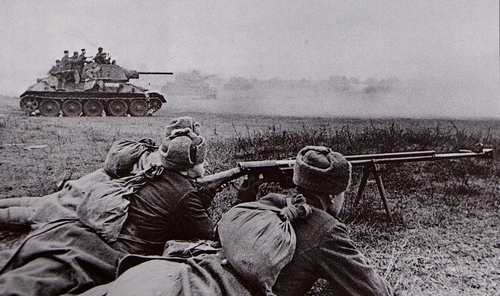 |
War correspondent Vassily Grossman is eager to catch up with his friend General Gurtiev again. He had first encountered the tough commander of the 308th Siberian Rifle Division as it grimly defended the Barrikady Factory, Stalingrad in 1942. It had since been given the title 120th Guards Rifle Division and now formed part of Gorbatov’s 3rd Army, in Rokossovsky’s Front. These men have come so far! He smiles at the camel Kuznechik (grasshopper) they have brought from Kazakhstan, still loyally plodding forward towing a supply wagon. But where is Gurtiev?
Then he gets the news – General Gurtiev has been killed by a shell. He watches these men doggedly march forward into Bobriusk, past the ruined houses, past the wreckage of the German columns that did not surrender. Grossman realises why they still fight hard after three years. Now it is for revenge. There will be no quarter for any German who does not put down his gun. |
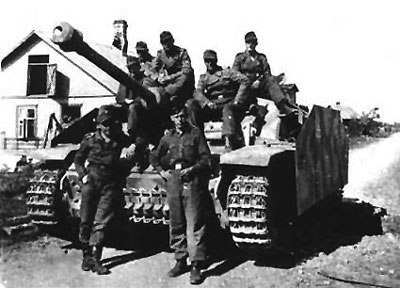 |
Counterattack
The few German armoured forces had been held well back and required OKH release before they could be used. In most cases the delay proved fatal, with Soviet tanks advancing up to fifty miles behind the German front line before any counterattack came. Soviet air attacks made road marches even more difficult. Some units such as the Feldhernhalle Panzerdivision were badly under strength to begin with.
A few units like the 5. Panzerdivision north east of Minsk acted on their own initiative to counterattack. With over 100 Panzer IV tanks this unit might have made a difference. But just as it began to succeed, it was ordered to turn to the south to face a fresh threat. The 505. Schwere Panzerabtielung (Tiger IE) also kept the north east road to Minsk open for a few days, but it too was forced back by the flood of Soviet tanks. |
| The fortunes of the 20. Panzerdivision illustrated the success of the Soviet plan. Located closer to the front, it first moved north east to counterattack a breakthrough south of Mogilev on the second day of fighting. Then the next day it was ordered to turn around and counterattack Rokossovsky’s breathrough. In the end it stopped neither. |
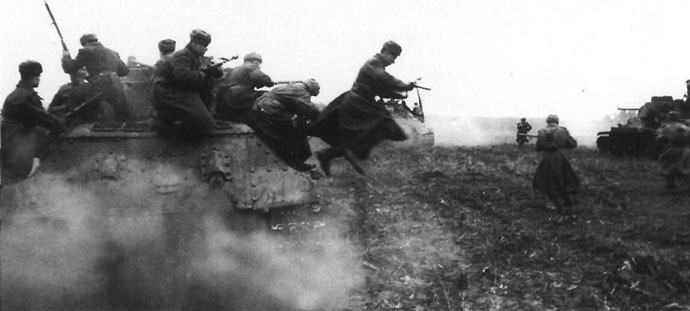 |
The Collapse of the FesterPlatz
Hitler’s plan had been that the defenders in the festerplatz towns and cities would hold out until relieved by a counterattack from armoured reserves. But the Soviet tanks breaking through continued on up to one hundred miles beyond. There was no chance of the weak German armoured reserves rescuing them. When the defenders were eventually permitted to breakout the front was too far away to reach unaided. Three divisions defending Vitebsk were cut down in the open ground as they tried to escape. The 78. Sturmdivision made it back from Orsha to the River Drutt, but was then destroyed trying to get from the Drutt to the Berezina River. |
| Nor had the “fortress” cities been adequately fortified or supplied to hold out. Mogilev fell to direct infantry assault from the Soviet 139th, 238th and 330th Rifle Divisions, on 27 June. In the south Lieutenant General Edmund Hoffmeister was ordered to defend Bobruisk with his 383. Infanteriedivision for as long as possible, to give the rest of 9th Army time to break out of their encirclement and reach the safety of the Berezina River. After three days of bitter street fighting Bobruisk fell on 29 June. Their sacrifice had done some good – a few assault guns and tanks of 20 Panzerdivision led 12,000 troops out of the pocket, while 20,000 more were captured and some 50,000 died. |
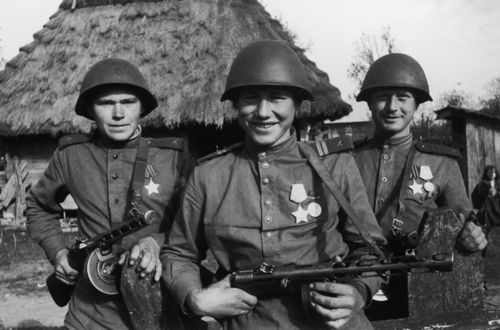 |
Liberation of Minsk
With the front line battles won, the road to Minsk was now open. In the centre 5th Guards Tank Army forced its way across the Berezina River at Borisov. From the south, Rokossovsky sent the 1st Guard Tank Corps and the 1st Guard Cavalry Corps ahead to already capture bridges across the Svisloch and Ptich Rivers, west of Minsk. If Minsk fell, it threatened to cut off all of the remaining units of 4th Army still east of the city. |
| At last realising the danger, 5. and 12. Panzer divisions had been brought back to halt the Soviet advance. Yet they could not stop them all. When the 2nd Guards Tank Corps reached the city it fell after just one day of fighting, on 2 July. The seven remaining divisions of 4th Army were trapped in a pocket just east of Minsk. Two corps tried to break out on 5 July, but few units succeeded. The last resistance ended on 11 July. |
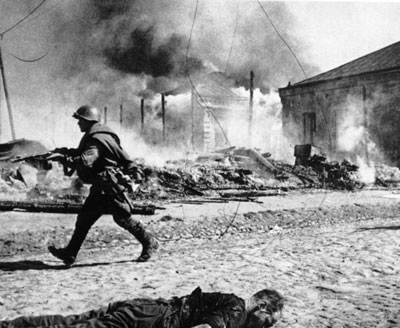 |
From Vilnius to the Vistula
The completeness of the Soviet victory meant there was nothing left to stop a further advance. After the fall of Minsk the victors paused for rest and resupply. Then at the end of July they swept forward again. In the north the 2nd Guards and 51st Army reached Latvia and cut of German Army Group North. The 5th Army and 11th Guards Army advanced through Vilnius and into Lithuania. Another four armies swept forward into Poland, joining with Soviet armies advancing from the Ukraine in the Lvov - Sandomierz offensive. The latter had started following the success of Bagration. By the end of August, the last German troops had been driven from Soviet territory.
As the Soviet armies approached Warsaw, it was only on the banks of the Vistula River that they were stopped. OKW had finally gathered a strategic reserve of two Panzer Korps, which cut off the Soviet spearhead.
|
| A counterattack by two divisions, 5. SS-Panzerdivision “Wiking”, and the “Herman Göring” Fallschirm-Panzerdivision, stabilised the front again on the line of the wide Vistula. |
Aftermath
Operation Bagration is the most complete victory for Soviet forces in World War Two. For the German army it was their worst ever defeat. The loss in front-line infantry manpower was a disaster from which they never recovered. Of the 38 starting divisions, 28 were destroyed. Of 800,000 men in Army Group Centre, 400,000 were lost either killed, wounded, missing or prisoner. Grimly, there were 200,000 dead, against 85,000 captured. Of 47 German generals in the affected army group, 10 were killed and 21 captured. Even of the survivors, many were trapped in the Courland pocket near Riga, cut off from Germany. The Soviets suffered too, though far less. Of their 1.7 million men, perhaps 105,000 were casualties, with 60,000 dead. As the surviving victors advanced through the empty, destroyed towns of Byelorussia, they would feel little sympathy for the vanquished. There would be a grim sequal to that experience when they invaded East Prussia in 1945. |
|
Bagration also marked a turning point in crucial ways. Germany would never again have enough good quality manpower to put in the front line. Nor would its forces threaten Russian soil again. By contrast, the Soviet army was now virtually on the border of Germany. Bagration was not merely the success of brute force either. Stavka had shown an ability to out-plan and out-think the German high command. Even more importantly, the Red Army now had tank commanders who understood armoured warfare. Leaders like Rokossovsky were smart, tough and flexible thinkers, able to take advantage of defensive weaknesses.
|
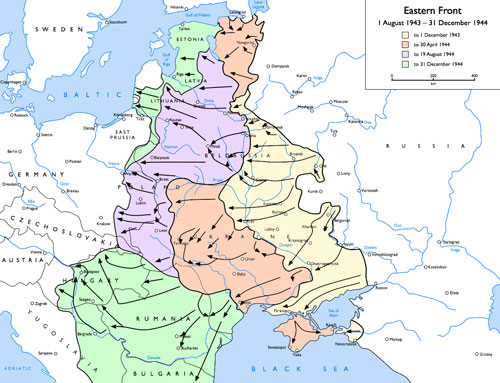 |
| As one German general said of the Russians: "They were first class fighters from the start. Over time, they learnt to become first class soldiers." In Bagration that time had come.
Earlier Events on the Eastern Front 1944...
|
Last Updated On Friday, March 12, 2021 by Wayne at Battlefront
|
|
|